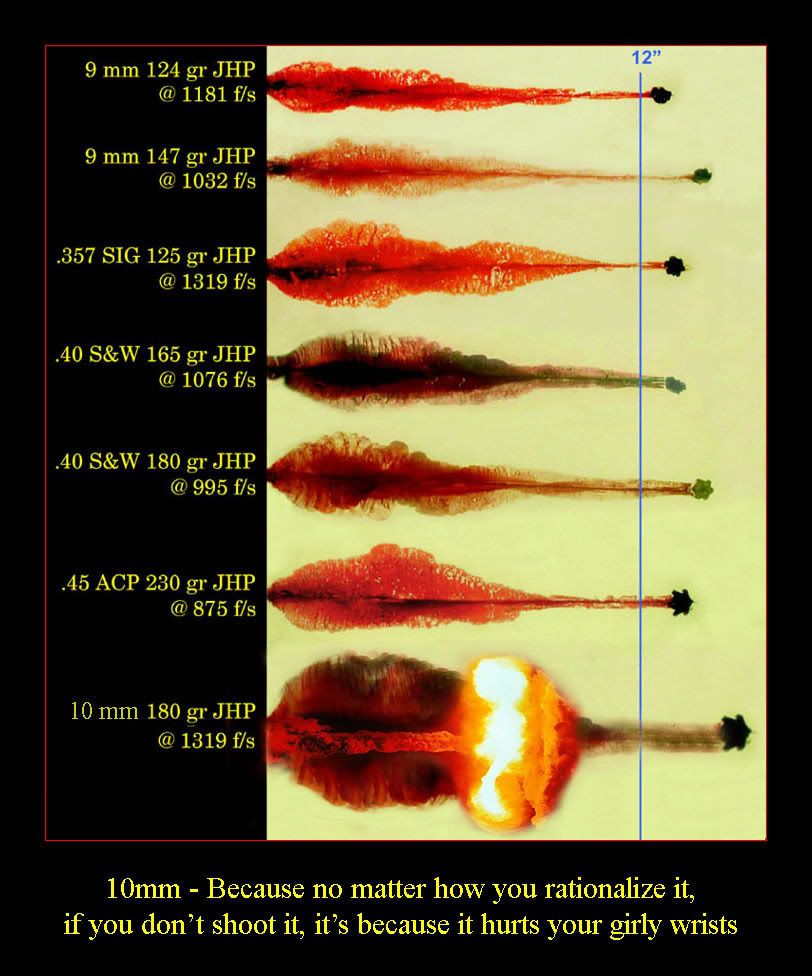size is irrelevant...
...if placement is wrong.
I won't go into bullet barriers (clothes, windows, etc.) or other "issues."
Small and fast can go in and out, can go in and bounce, can go in and stay in...
Large and slow can go in and out, can go in and bounce, can go in and stay in...
If the bullet doesn't hit something to cause massive bleeding, the size and speed likely are irrelevant.
You have just lost control of the horizontal and vertical... I now control the monitor...
Imagine the same man in two parallel universes. The man is shot, in universe A, by a large and slow bullet. In universe B, the man is shot in the exact same spot by a small and fast bullet traveling at the same angle as that bullet in universe A. Without knowing his hydration (

), his blood vessel layout, the exact location of the entry point, etc., how can a scientist tell you which is better?
Physics says momentum is "the power residing in a moving object" such that
p = mv
where p is the momentum, m is the mass and v is the velocity.
However, that may be irrelevant if the bullet passes through his cheek (any of the 4 may work..). Might the larger bullet cause more bleeding? It might. However, the placement determines the bleeding, and any bleeding may not be life threatening or incapacitating... In the cheek example, the perp may simply yell, be in pain (later), and walk or limp, depending on which cheek is shot, away...
So, stop worrying about size...
Focus on placement.

